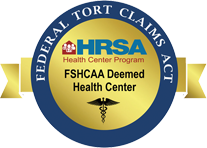Three quarters of children will get at least one ear infection by the age of three, but it is hard for parents to spot them since ear infections may come with only a whisper of symptoms. The most common cause of ear infections is colds. Children can also have an ear infection when they get a sinus infection or allergies. The secretions that happen with a common cold, allergies, or a sinus infection can get trapped in the middle ear and viruses or bacteria can cause an infection that results in a bulging or reddened eardrum. Ear infections are the most common reason parents take kids to the doctor.
Some ear infections are considered acute (otitis media). They cause pain in the ear and can cause fever. They occur when parts of the middle ear are infected and swollen and fluid is trapped behind the eardrum. Sometimes fluid remains trapped behind the eardrum after an infection. This is called otitis media with effusion or sometimes serous otitis media. The child may have no symptoms, but a healthcare provider will be able to see fluid behind the eardrum. Some children develop chronic ear infections which can result in fluid remaining behind the eardrum even though there is no infection, or sometimes constant drainage from a perforated eardrum.
Signs of an ear infection include: tugging at the ear, difficulty sleeping or lying down, ear drainage (one of the surest signs is fluid or pus coming out of the ear), crying more than usual, difficulty hearing, fever, loss of balance, diarrhea, vomiting, and reduced appetite.
Children under three are the most susceptible to ear infections because they don’t yet have strong immune systems. They also have more horizontal Eustachian tubes (channels that connect the middle ear to the throat), causing more fluid to build up instead of drain. Most children stop getting ear infections by the time they are six.
There are things that we can do to protect children from getting ear infections.
- Do not to smoke around kids. Studies show that second-hand smoke can make a child two to three times more likely to develop ear infections.
- Breast feed your baby. Breast fed babies are less likely to develop ear infections.
- Keep your baby in a sitting position if bottle feeding. Milk or formula is more likely to flow into the middle ear when a child sucks lying down which gives bacteria a better chance to develop an infection.
- Keep a watch on allergies. Mucus from allergy reactions can block the eustachian tubes and make infections more likely.
- Vaccinate your child with the 13-valent pneumococcal conjugate-it protects against several types of infection causing bacteria.
- Try to prevent colds by limiting exposure to others who have colds symptoms. Washing hands is a good prevention strategy as well.








